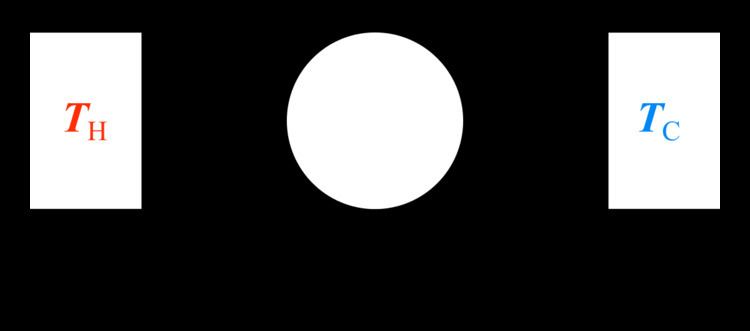 | ||
In thermodynamics, a state function or function of state is a function defined for a system relating several state variables or state quantities that depends only on the current equilibrium state of the system. State functions do not depend on the path by which the system arrived at its present state. A state function describes the equilibrium state of a system.
Contents
For example, internal energy, enthalpy, and entropy are state quantities because they describe quantitatively an equilibrium state of a thermodynamic system, irrespective of how the system arrived in that state. In contrast, mechanical work and heat are process quantities or path functions, because their values depend on the specific transition (or path) between two equilibrium states. The mode of description breaks down for quantities exhibiting hysteresis effects.
History
It is likely that the term “functions of state” was used in a loose sense during the 1850s and 60s by those such as Rudolf Clausius, William Rankine, Peter Tait, William Thomson, and it is clear that by the 1870s the term had acquired a use of its own. In 1873, for example, Willard Gibbs, in his paper “Graphical Methods in the Thermodynamics of Fluids”, states: “The quantities V, B, T, U, and S are determined when the state of the body is given, and it may be permitted to call them functions of the state of the body.
Overview
A thermodynamic system is described by a number of thermodynamic parameters (e.g. temperature, volume, pressure) which are not necessarily independent. The number of parameters needed to describe the system is the dimension of the state space of the system (D). For example, a monatomic gas having a fixed number of particles is a simple case of a two-dimensional system (D = 2). In this example, any system is uniquely specified by two parameters, such as pressure and volume, or perhaps pressure and temperature. These choices are equivalent. They are simply different coordinate systems in the two-dimensional thermodynamic state space. Given pressure and temperature, the volume is calculable from them. Likewise, given pressure and volume, the temperature is calculable from them. An analogous statement holds for higher-dimensional spaces, as described by the state postulate.
Quite generally, a state function is on the form
where P denotes pressure, T denotes temperature, V denotes volume, and the ellipsis denotes other possible state variables like particle number N and entropy S. If the state space is two-dimensional as in the above example, one may visualize the state space as a three-dimensional graph (a surface in three-dimensional space). The labels of the axes are not generally unique, since there are more state variables than three in this case, and any two independent variables suffice to define the state.
When a system changes state continuously, it traces out a "path" in the state space. The path can be specified by noting the values of the state parameters as the system traces out the path, perhaps as a function of time, or some other external variable. For example, we might have the pressure
It is clear that in order to calculate the work W in the above integral, we will have to know the functions
It can be seen that the integrand can be expressed as the exact differential of the function
By way of notation, we will specify the use of d to denote an exact differential. In other words, the integral of
It is best to think of state functions as quantities or properties of a thermodynamic system, while non-state functions represent a process during which the state functions change. For example, the state function
List of state functions
The following are considered to be state functions in thermodynamics:
